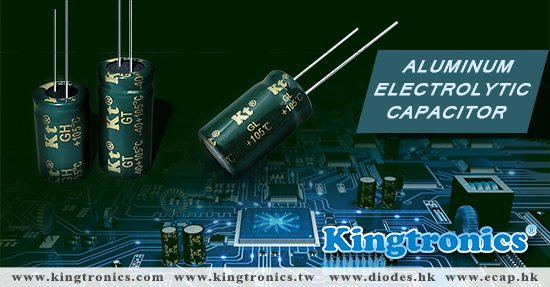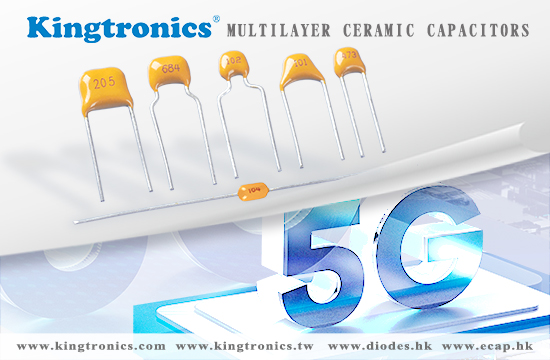1. DC electrolytic capacitors can only be used on DC circuits, and their polarity must be marked in an appropriate position or next to the conductor/terminal.
2. If the polarity of the circuit is unclear or unclear in the circuit loop, it is recommended to use a non-polar electrolytic container.
3. The working environment temperature of electrolytic capacitors should not exceed the specified operating temperature range.
4. Electrolytic capacitors should be stored in low temperature and dry places. If the storage period is long, they should be re aged with rated voltage before using.
5. The ripple current passing through the electrolytic capacitor should not exceed its allowable range. If it exceeds the specified value, electrolytic capacitors with high ripple current resistance should be selected.
6. When in use, the working voltage of the electrolytic capacitor should not exceed its rated voltage.
7. High temperature heating devices such as electric soldering irons should be kept at an appropriate distance from the plastic shell of the electrolytic capacitor to prevent the plastic sleeve from cracking due to overheating.
8. When welding electrolytic capacitors, the welding time and temperature should not exceed 10 seconds and 260 degrees Celsius.
9. Applying excessive force to the guide pins and terminals will damage the internal structure of the electrolytic capacitor

In the realm of electronic components, the unassuming Multilayer Ceramic Capacitor (MLCC) has played a pivotal role for decades. As technology continues to advance, so do the applications of these tiny powerhouses. In 2023, Multilayer Ceramic Capacitors have found their way into an astonishing array of cutting-edge technologies, enabling everything from 5G connectivity to space exploration.
1. 5G Revolution
The rollout of 5G networks has brought about unprecedented advancements in communication speed and connectivity. MLCCs, with their high capacitance and compact size, have become essential components in the construction of 5G infrastructure. These capacitors are used in base stations, antennas, and other network equipment to stabilize power distribution and filter out unwanted frequencies, ensuring seamless and reliable connections for users.
2. Electric Vehicles (EVs)
The automotive industry has experienced a paradigm shift towards electric vehicles, and MLCCs have emerged as indispensable elements in this transformation. With their ability to store and discharge energy rapidly, MLCCs are used in EVs for regenerative braking systems, ensuring efficient energy recovery. Additionally, these capacitors help manage power distribution within the vehicle's complex electrical system, contributing to enhanced overall performance and safety.
3. Internet of Things (IoT)
The IoT landscape has grown exponentially, connecting an ever-increasing number of devices. MLCCs facilitate the miniaturization of IoT devices, providing stability to power supplies, filtering out noise, and supporting efficient energy usage. From smart thermostats to wearable health monitors, these capacitors enable devices to communicate seamlessly and process data with precision.
4. Renewable Energy
As the world pivots towards sustainable energy sources, MLCCs have found their way into renewable energy systems. Wind turbines and solar panels rely on sophisticated electronics to capture, store, and distribute energy. MLCCs help stabilize power conversion and conditioning circuits, ensuring a consistent energy flow into the grid.
5. Space Exploration
The realm of space exploration demands components that can withstand extreme conditions while delivering peak performance. Multilayer Ceramic Capacitors have proven their mettle in this arena by being used in satellites, spacecraft, and exploration rovers. Their ability to endure wide temperature ranges, radiation, and mechanical stress makes them vital for critical systems in outer space.
6. Medical Devices
Advancements in medical technology have led to the development of intricate and compact medical devices. MLCCs contribute to the reliability and efficiency of these devices by providing stable power supply filtering and energy storage. From portable diagnostic tools to implantable devices, these capacitors help drive progress in medical science.
Multilayer Ceramic Capacitors have come a long way from their humble beginnings, evolving into indispensable components across various industries in 2023. As technology continues to evolve, the demand for these capacitors is poised to increase further, driving innovations and enabling the seamless functioning of devices that power our modern world. Whether it's high-speed communication, sustainable energy, space exploration, or healthcare advancements, MLCCs are the unsung heroes that make it all possible.
Kingtronics takes pride in presenting premium multilayer ceramic capacitors crafted from high-purity ceramics. Our dedication lies in enhancing our products further through the promotion of miniaturization, increased capacitance, and elevated functionality. The extensive array of items in our collection ensures that you will discover the ideal capacitor for every conceivable application.

Contact us
Tel: (86) 769 8118 8110
Tel: (852) 8106 7033
Fax: (852) 8106 7099
E-mail: info@kingtronics.com
Skype: kingtronics.sales
MSN: kingtronics-sales@hotmail.com
Web: www.Kingtronics.com
YouTube: www.youtube.com/c/Kingtronicskt
About
Kingtronics International Company was established in 1995 located in Dongguan City of China to handle all sales & marketing for factories located in Chengdu, Sichuan and Zhaoqing, Guangdong, China. In 1990, we established the first factory to produce trimming potentiometer and in 1999 we built up new factory in Zhao Qing, Guangdong. Now with around 850 workers, Kingtronics produce trimming potentiometers, dipped tantalum capacitors, multilayer ceramic capacitors, and diode & bridge rectifier. We sell good quality under our brand Kingtronics, and Kt, King, Kingtronics are our three trademarks. All our products are RoHS compliant, and our bridge rectifier have UL approval. Please visit our Products page, you could please download all our PDF datasheet and find cross reference for our Trimming Potentiometer and capacitors.
Tantalum and Ceramic Capacitors Cross Reference ↓ Download
Diodes & Rectifiers List(PDF: 97KB) ↓ Download
Trimming Potentiometer Cross Reference ↓Download
Categories
- Kt Kingtronics (244)
- Diodes & Rectifiers (159)
- Aluminum Electrolytic Capacitor (148)
- Trimming Potentiometers (121)
- Tantalum Capacitors (95)
- Multilayer Ceramic Capacitors (70)
- Kt Bridge Rectifier (64)
- Quartz Crystals (57)
- Surge Arresters (34)
- Tactile Switches (31)
- Kt Kingtronics Components (30)
- Ceramic Trimmer Capacitors (25)
- Film Capacitors (20)
- Super Capacitors (16)
- Metal Oxide Varistor (10)
- Negative Temperature Coefficient Thermistor (6)
- Music capacitors (2)
Archives
- 2023 November (2)
- 2023 October (1)
- 2023 September (2)
- 2023 August (2)
- 2023 July (4)
- 2023 June (12)
- 2023 May (6)
- 2023 April (4)
- 2023 March (3)
- 2023 February (2)
- 2023 January (1)
- 2022 December (3)
- 2022 November (2)
- 2022 October (3)
- 2022 September (4)
- 2022 August (3)
- 2022 July (3)
- 2022 June (2)
- 2022 May (3)
- 2022 April (4)
- 2022 March (4)
- 2022 February (2)
- 2022 January (3)
- 2021 December (4)
- 2021 November (3)
- 2021 October (4)
- 2021 September (4)
- 2021 August (4)
- 2021 July (4)
- 2021 June (5)
- 2021 May (4)
- 2021 April (3)
- 2021 March (4)
- 2021 February (4)
- 2021 January (4)
- 2020 December (5)
- 2020 November (4)
- 2020 October (4)
- 2020 September (7)
- 2020 August (8)
- 2020 July (9)
- 2020 June (8)
- 2020 May (9)
- 2020 April (11)
- 2020 March (6)
- 2020 February (4)
- 2020 January (4)
- 2019 December (6)
- 2019 November (7)
- 2019 October (6)
- 2019 September (6)
- 2019 August (9)
- 2019 July (6)
- 2019 June (4)
- 2019 May (16)
- 2019 April (6)
- 2019 March (6)
- 2019 February (9)
- 2019 January (5)
- 2018 December (4)
- 2018 November (4)
- 2018 October (5)
- 2018 September (8)
- 2018 August (10)
- 2018 July (7)
- 2018 June (12)
- 2018 May (22)
- 2018 April (4)
- 2018 March (4)
- 2018 February (8)
- 2018 January (13)
- 2017 December (4)
- 2017 November (4)
- 2017 October (5)
- 2017 September (4)
- 2017 August (21)
- 2017 July (7)
- 2017 June (5)
- 2017 May (4)
- 2017 April (4)
- 2017 March (9)
- 2017 February (8)
- 2017 January (8)
- 2016 December (10)
- 2016 November (16)
- 2016 October (8)
- 2016 September (10)
- 2016 August (13)
- 2016 July (12)
- 2016 June (10)
- 2016 May (14)
- 2016 April (8)
- 2016 March (10)
- 2016 February (6)
- 2016 January (8)
- 2015 December (10)
- 2015 November (8)
- 2015 October (3)
- 2015 July (5)
- 2015 June (9)
- 2015 May (7)
- 2015 April (8)
- 2015 March (9)
- 2015 February (7)
- 2015 January (5)
- 2014 December (13)
- 2014 November (4)
- 2014 October (4)
- 2014 September (5)
- 2014 August (4)
- 2014 July (4)
- 2014 June (4)
- 2014 May (4)
- 2014 April (4)
- 2014 March (5)
- 2014 February (3)
- 2014 January (4)
- 2013 December (8)
- 2013 November (9)
- 2013 October (10)
- 2013 September (9)
- 2013 August (11)
- 2013 July (10)
- 2013 June (3)
- 2013 May (4)
- 2013 April (5)
- 2013 March (2)
- 2013 February (1)
- 2013 January (3)
- 2012 December (5)
- 2012 November (6)
- 2012 October (5)
- 2012 September (10)
- 2012 August (11)
- 2012 July (11)
- 2012 June (12)
- 2012 May (14)
- 2012 April (10)
- 2012 March (14)
- 2012 February (10)
- 2012 January (6)
- 2011 December (9)
- 2011 November (11)
- 2011 October (10)
- 2011 September (13)
- 2011 August (14)
- 2011 July (13)
- 2011 June (13)
- 2011 May (13)
- 2011 April (14)
- 2011 March (27)
- 2011 February (13)
- 2011 January (24)
- 2010 December (21)
- 2010 November (12)
- 2010 October (11)
